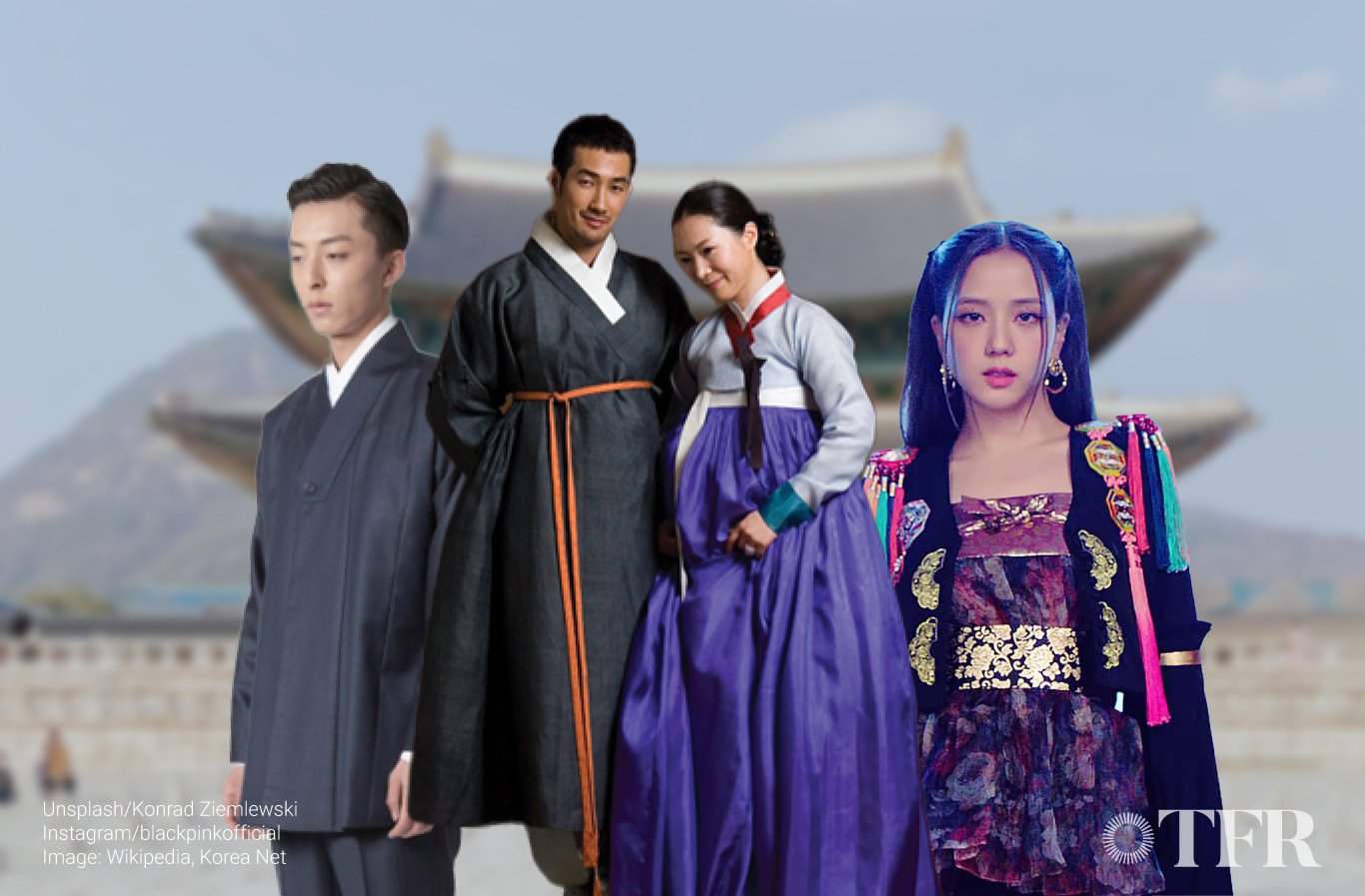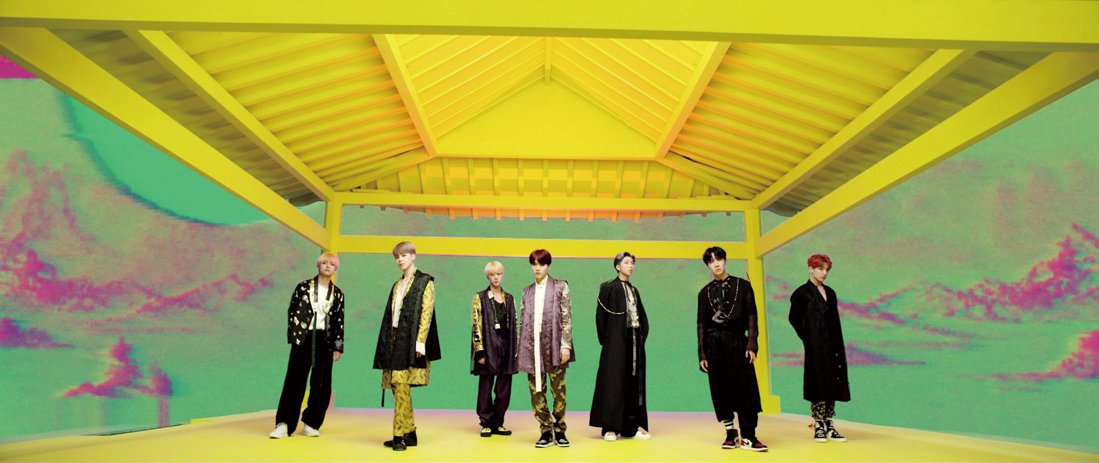Transformation of traditional clothes: South Korea’s hanbok
Written by Lara Dianrama and Kezia Pribadi | Read in Indonesian
Traditional clothing, like any cultural instrument in general, changes over time and as technology develops. What humankind wore in early civilisations would be very different from what we wear today. However, as an identity of a nation, a traditional attire will still have a cultural characteristic as part of cultural preservation.
Just as Indonesia continues to strive to preserve kebaya, South Korea also continues to strive to preserve what makes their traditional clothing, hanbok, the hallmark of their country.
Hanbok is a traditional South Korean dress which consists of two parts; the upper part, called jeogori, and the lower part, baggy pants called baji for men, and a long skirt called chima for women.
Hanbok used to be the clothes worn daily by the people of South Korea. However, with the entry of other cultural influences, a shift occurred. Elements of comfort in Western clothing in the early 20th century were incorporated to enhance hanbok into its foundations. Hanbok has since been known as a formal dress worn only at certain times.
In the 1980s, a movement emerged to reclaim clothing that had disappeared from everyday life. Unfortunately, this movement failed to become mainstream fashion.
However, just like in Indonesia, in the end, in South Korea too, many designers have started to focus on the hanbok transformation. Not only as a conservation effort, but also as an effort to introduce their traditional clothing to the world.
Contemporary brands, such as Korean in Me's Modern Hanbok and Kim Me Hee, have incorporated traditional designs into their modern upscale outfits. Lee Young–hee introduced her fashion world to a global level with a design that combines Western and Korean elements. The South Korean government has also taken part in preserving hanbok by sponsoring fashion designers.
Various variants of hanbok have been created, ranging from standard-themed hanbok, to contemporary hanbok. Jeogori models in modern times are made to look like jackets, while chima come in diverse lengths, ranging from long and medium to short.
Image: man and woman in hanbok
Hanbok trend
Hanbok became a trending topic several times in Twitterverse after the group BTS wore stylish hanbok made by famous hanbok designer Baek Oak-soo in the music video for their song “Idol”. The group is known for advocating for South Korean designers, often donning clothing and accessories from local and even small brands. The hanbok BTS wore was an overcoat, worn during the Goryeo and Joseon periods – the dopo made of simple black fabric lined with gold paired with a black t-shirt and sneakers created an effortless casual look.
BLACKPINK’s “How You Like That” music video in 2020 drew positive attention. The outfit donned by the members incorporated many elements and types of hanbok – from phoenix of the royal family to the coat-esque dopo (commonly worn by military men).
VIXX’s traditional hanbok in their music video for “Shangri-La” moved away from the original draping and clinging component of jeogori. The members wore a structured top that is parallel to a suit. To maintain the tradition, they were accessorised with norigae – a traditional ornamental pendant that has a knot and tassel hung on their waists.
Image: BTS wearing hanbok designed by Baek Oak-soo in “Idol” music video
Elements of hanbok
Hanbok is a garment made with space and undulating silhouettes, sewn in a curved manner in order for the wearer to move freely without any constraint. The unique silhouette and flowing lines give space without compromising dignity and elegance. In addition to its shape and intricate layers, hanbok can also get costly, hence worn mostly during wedding celebrations, birthdays and other important occasions.
Hanbok has three main elements: undergarments, jeogori (top) and baji (pants) or chima (skirt). A contemporary hanbok, however, can be worn as one or separate piece. The main elements aren’t restricted to either gender – women may also wear pants if they wish to do so.
Silhouettes
The billowy and undulated silhouettes of hanbok are still very much kept in modern hanbok. The only difference is that it is much more versatile and there are many more options to choose from.
Jeogori hemline used to have a wavy shape, but in recent times, it often has a straight shape due to Western influence. Postmodern hanbok has set-in sleeves.
Material
Traditional hanbok are made of cotton, muslin, silk and satin and they have more layers. The modernised versions are made out of an array of textiles, such as polyester, cashmere, leather, denim and even digital textile printing.
Patterns
Hanbok patterns have generally been characterised through the elements of nature, such as peonies and lotus flowers. Dragons, phoenixes, as well as cranes and tigers were primarily reserved for royalty and the nobles. With reference to contemporary hanbok, embellishments aren’t restricted to just hand sewn embroideries; they also use beads and crystals.
Tradition vs modern contemporary
Daily tradition, world fashion trends and time continue to move forward. Traditional hanbok has also evolved throughout history. Making a mark in the modern world, hanbok’s distinctive elements and ancient philosophy are well-preserved even in present times.
Colours
Traditionally, hanbok was made through an intricate process by artisans who hand dyed the fabric. Vivid colours are an attribute of hanbok as they refer to the five elements of the yin-yang theory: blue, red, black, white, yellow. As per tradition, colours symbolise an individual’s social position and marital status, but as time passes and hanbok is reinterpreted, with modern technology, colours and dyes are introduced.
Now designers have the freedom to infuse different dyes and colour variations; they are no longer put in a box or labelled for a certain group of people. The choices are never-ending – mellow and fresh or daring and eclectic.
Styling
For more than 200 years, hanbok was wrapped from the right side, but in recent times, some hanboks are wrapped over from the left. A diverse traditional hanbok style has been adapted, but it can pose a struggle to point out what traditional is.
Yet in present times, the progressive dynamic of hanbok is flipped. Since Western patterns are adopted, the values and significance of hanbok elements are captured in a different light. With the use of Western style patterns, hanbok is interpreted in a way that is bold yet still sophisticated.
Modern hanbok is also known as gaeryang hanbok, which means “reformed/upgraded” hanbok. It is a modified version of the traditional hanbok. Gaeryang hanbok is much more accessible and user friendly. Gaeryang hanbok is pioneered by some of South Korea’s contemporary designers. They are taking a step forward in diversifying materials to show the intricate beauty and traditional fabrics to bridge the old and the new.
The reformation of the hanbok is a melting pot of Western and other fashion influences while maintaining traditional hanbok elements, such as skirt or pants lengths, fabric and materials, embellishments, patterns as well as colours. The allure of present day hanbok is that it does not stick to what is accustomed.
To highlight and embrace tradition and modernity, today’s contemporary hanbok can be worn daily. It is a way to integrate South Korea’s heritage to today’s world of fashion. All while maintaining the traditional values, message and spirit of the South Korean tradition. The vision of the new generation is about modifying historically traditional clothing to exist within a minimalist concept – something that is easier to wear. The transformation is still culturally accepted but still denotes poise, warmth and ease which are the characteristics of South Korean beauty.
Image: modern hanbok from Unsplash
Notable hanbok designers
The growing efforts to modernise hanbok to be worn everyday is not just a temporary movement. Park Mi-yeon, a pioneer hanbok designer, with the brand Armi presents a casual flair in the hanbok designs, as their hanbok can be paired with pants and jeans and accessorised with what the wearer desires. Armi carries itself as a laid-back and non-conformist brand.
Im Seonoc is one of the leading designers who has revamped the traditional ways of South Korean tradition. Seonoc’s designs are based on universal contemporary clothing and the practicality that is associated with the uniqueness of hanbok.
Seonoc incorporates modern everyday dresses styled similarly to traditional hanbok. Seonoc’s designs include white cotton shirts, bolero, Spencer jackets and rubber band skirts, as well as baggy pants. Seonoc’s textile choices, such as neoprene and pressed polyester, means that less stitching is needed because the fabrics could easily be assembled with glue. The pattern on the dress implies the Sun and Moon and five peaks (Irworobongdo) with simple graphic black and white lines.
Another contemporary designer is Arumjigi with the brand RE;CODE who has a mission to tell a story of South Korean culture with an aim to tell a message that is beyond fashion. Arumjigi collected hanbok that were donated through their campaign “Hanbok Leaving Outside”. With one question in mind “How can we turn hanbok into something that is suitable for the modern life?”, they created solutions to minimise the impractical features of traditional hanbok, namely disassembling jeogori, drumagi and magoca and re-create.
Contemporary designers have made significant changes while incorporating classic motifs – integrating traditional patterns and structures in fabrics, including textures. Hanbok has also influenced Western designers, making its way at the international level in the runways of fashion week.
As time continues to move forward and change is inevitable, hanbok continues to be reinvented in ways that retains cultural heritage – not only it is valuable for its historical value and the prestige of South Korean artistic importance; it has also become something that isn’t contained within a monolith of definition but an abundant depiction of culture that future generations can celebrate.






















